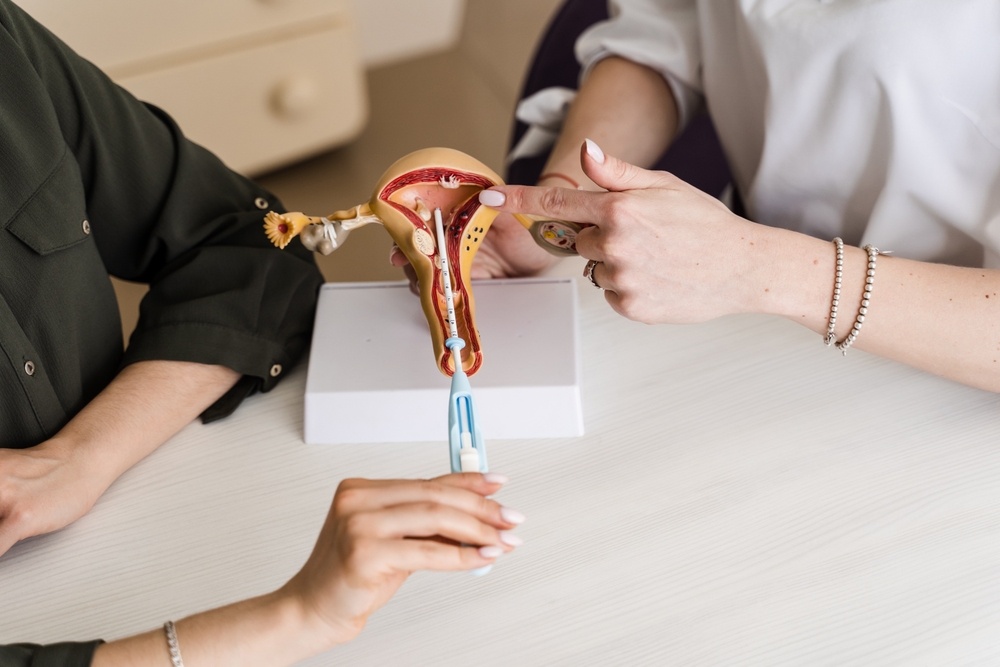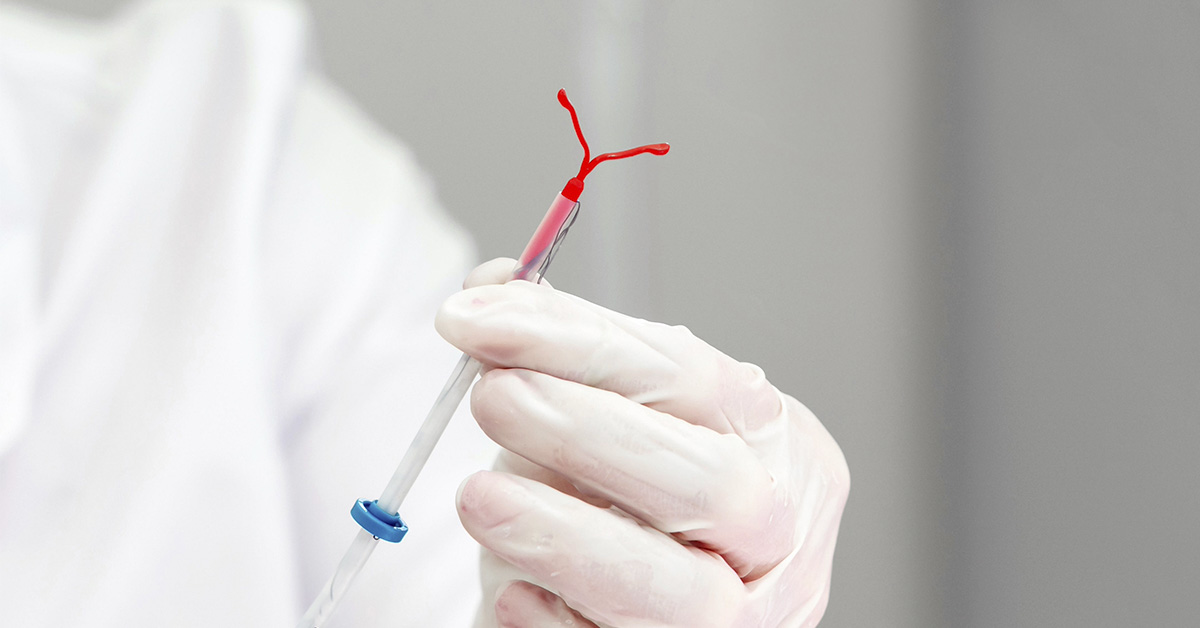You’re lying on an exam table in a paper gown, feet in stirrups, anxiously gripping the sides. The doctor tells you to “Take a deep breath” as they begin the IUD insertion. A sudden cramp hits with a sharp, deep pain unlike anything you expected. Your face tenses, eyes sting, but you’re told, “Almost done.” There’s no numbing, no real warning, just discomfort that lingers long after the procedure. If this scenario sounds familiar, you’re not alone. For many, this moment is their first real encounter with IUD insertion pain, and it’s often far worse than they thought.
For years, countless patients have spoken up about pain during IUD insertion and other procedures. Sharing stories of unexpected cramps, pain, waves of dizziness, and feeling completely unprepared for what their bodies went through. Despite these honest accounts, many doctors brushed aside their pain or offered little more than a pat on the shoulder. But that’s starting to change. The American College of Obstetricians and Gynecologists (ACOG) recently released new guidelines urging providers to take that pain seriously. As more voices come forward, the medical community is finally beginning to listen with care and compassion.
IUD Insertion Often Causes Severe Pain

If you’ve ever had an IUD placed, you probably remember the moment it happened, your body tense, your heart racing, and that sudden sharp pain that took you by surprise. IUD insertion pain isn’t just a mild discomfort for many; it can be intense and overwhelming. Some people cry, some faint, and others leave the office feeling rattled or even traumatized. Yet for years, many were told it was normal to feel that way. These new guidelines finally validate what so many have already known. That this pain is real, and it deserves better treatment.
ACOG’s New Guidelines Explained

So what’s actually changing? ACOG has made it clear: doctors need to start managing IUD side effects, especially pain, more seriously. That means offering options like numbing the cervix, recommending over-the-counter pain meds ahead of time, or even using light sedation when needed. These aren’t radical ideas, they’re the kinds of compassionate steps many patients wish had been offered all along. The guidelines shift the focus to comfort, consent, and real preparation, so that no one walks into these procedures feeling like they just have to “tough it out.”
Local Anesthetic Should Be Routine

Imagine how different your appointment might have felt if the doctor had said, “We’ll start by numbing your cervix so this won’t hurt as much.” Using lidocaine or another local anesthetic can go a long way in reducing pain during IUD insertion. But surprisingly, many providers still don’t offer it unless you ask. ACOG now recommends this become standard. No one should have to guess whether pain relief will be part of the plan, it should already be there, no questions asked.
Patients Deserve Full Pain Relief Options

Pain is deeply personal. What feels manageable for one person might be unbearable for another. That’s why these new guidelines push for individualized care. Your doctor should talk to you about your concerns, your past experiences, and what will make you feel safe. Whether it’s ibuprofen, anti-anxiety meds, or even sedation, you deserve choices. Addressing IUD insertion pain means listening to you, not just checking a box. Every body is different, and your comfort should always be part of the conversation.
Why This Guidance Matters

If you’ve ever left an appointment feeling like your pain didn’t matter, you’re not alone. The history of women’s health is filled with stories of discomfort brushed aside. ACOG’s new stance sends a powerful message: your pain is valid. IUD side effects, especially pain, aren’t something you just have to accept. With the right support, you can feel more in control, and less afraid when walking into procedures like these. It’s not just about medicine. It’s about feeling seen and heard in the moments you need it most.
Patient Stories Sparked the Shift

Real change often begins with real voices. The wave of patients who bravely shared their painful IUD experiences, through blog posts, tweets, and videos, all made a difference. They turned private suffering into public awareness. These stories helped ACOG understand how common pain during IUD insertion really is. Without that honesty, the guidelines might still be outdated. So if you’ve ever shared your story, or supported someone who did, you’ve had a small part in these new guidelines.
No More ‘Just Breathe’ Advice

You might’ve heard it before: “Just breathe,” or “It’ll be over soon.” For many, those words feel empty in the middle of intense IUD insertion pain. Breathing techniques alone can’t stop cramps from doubling you over. ACOG now recommends real pain management such as anesthetics, medication, and preparation. Replacing vague reassurances with tangible relief is a small but powerful act of respect. You deserve better than being told to grit your teeth and wait it out.
Read More: Young Women Face 82% Higher Cancer Rates Than Men: What’s Really Going On?
Informed Consent Is More Than a Signature

True consent isn’t just signing a form. It’s understanding what will happen to your body and how it might feel. ACOG now encourages doctors to have full conversations with patients before starting procedures. That includes explaining possible IUD side effects and pain relief options in plain language. You have every right to ask questions and to pause if something doesn’t feel okay. Feeling informed doesn’t just help you prepare; it gives you back a sense of control in a vulnerable moment.
This Isn’t Just About IUDs

While the spotlight is on pain during IUD insertion, ACOG’s message applies far beyond that. Colposcopies, biopsies, endometrial sampling, all of these can hurt too, and they’re often done without any numbing or pain plan. That shouldn’t be the case. The same standard of care and compassion should apply no matter what the procedure is. If something involves your body and your comfort, you deserve thoughtful, prepared care every single time.
Next Steps for Clinics and Doctors

These updated guidelines are a strong start, but real change happens in exam rooms across the country. Doctors and clinics now need to step up. That means asking patients about pain, offering solutions, and taking concerns seriously. You shouldn’t have to beg for relief or do your own research ahead of time. Reducing IUD insertion pain should be a given, not a luxury. With more awareness and training, we can finally close the gap between what patients need and what they’re offered.
A Step Toward Respectful Care

If you’ve ever walked out of a gynecological procedure feeling ignored or hurt, you’re not alone, and things are starting to change. ACOG’s guidelines offer hope that the next person won’t have to go through what you did. By acknowledging and addressing IUD side effects, especially pain, the medical world is slowly catching up to what patients have always known: your body deserves care that’s kind, informed, and honest. Everyone should feel safe and supported in that exam room, and now, we’re one step closer.
Read More: Mammograms: Navigating the Risks, Benefits, and Misinformation

